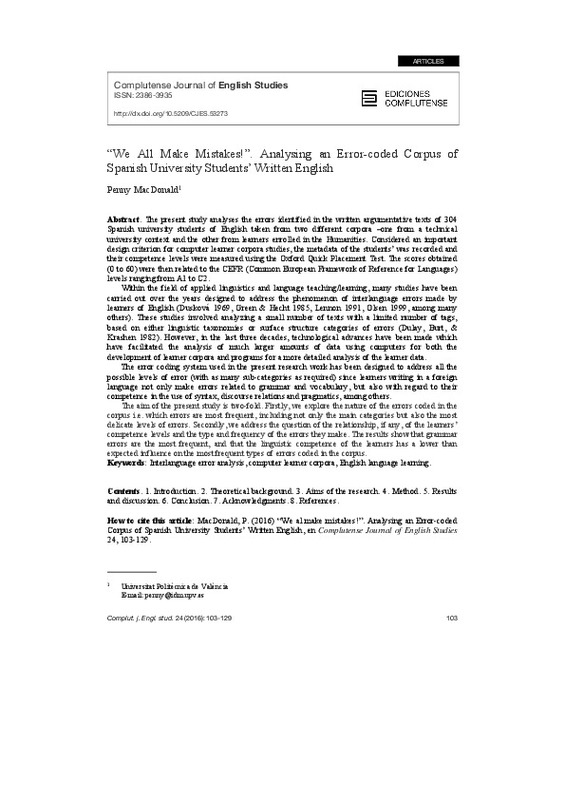JavaScript is disabled for your browser. Some features of this site may not work without it.
Buscar en RiuNet
Listar
Mi cuenta
Estadísticas
Ayuda RiuNet
Admin. UPV
We All Make Mistakes! . Analysing an Error-coded Corpus of Spanish University Students Written English
Mostrar el registro completo del ítem
Mac Donald, P. (2016). We All Make Mistakes! . Analysing an Error-coded Corpus of Spanish University Students Written English. Complutense Journal of English Studies. 24:103-129. https://doi.org/10.5209/CJES.53273
Por favor, use este identificador para citar o enlazar este ítem: http://hdl.handle.net/10251/96303
Ficheros en el ítem
Metadatos del ítem
| Título: | We All Make Mistakes! . Analysing an Error-coded Corpus of Spanish University Students Written English | |
| Autor: | Mac Donald, Penny | |
| Entidad UPV: |
|
|
| Fecha difusión: |
|
|
| Resumen: |
[EN] The present study analyses the errors identified and coded in the written argumentative texts of 304 Spanish university students of English extracted from two corpora one from a technical university context corpus ...[+]
|
|
| Palabras clave: |
|
|
| Derechos de uso: | Reserva de todos los derechos | |
| Fuente: |
|
|
| DOI: |
|
|
| Editorial: |
|
|
| Versión del editor: | http://dx.doi.org/10.5209/CJES.53273 | |
| Código del Proyecto: |
|
|
| Agradecimientos: |
We would like to acknowledge the support given for the TREACLE Project from the Spanish Ministry of Economy and Competitiveness (FFI2009-14436/FILO). The author would also like to express her gratitude to Mick O'Donnell ...[+]
|
|
| Tipo: |
|








